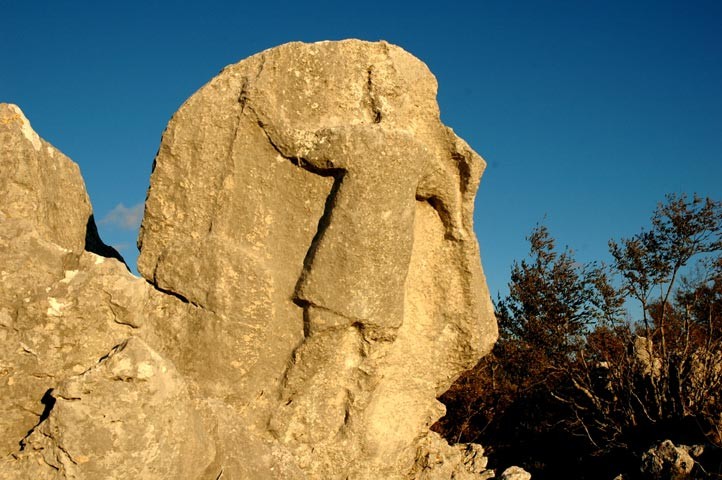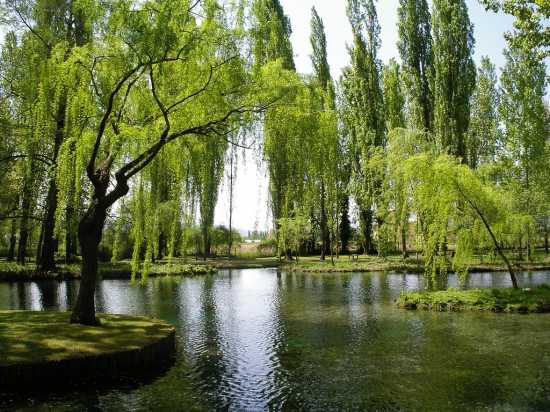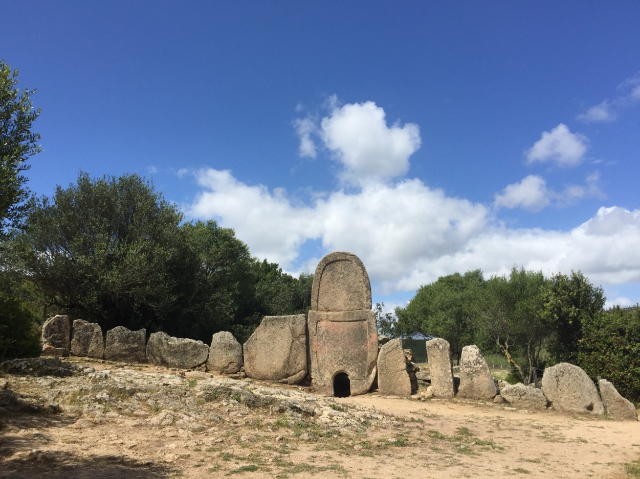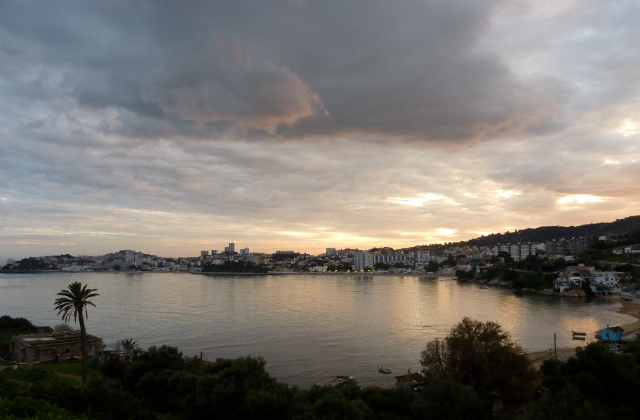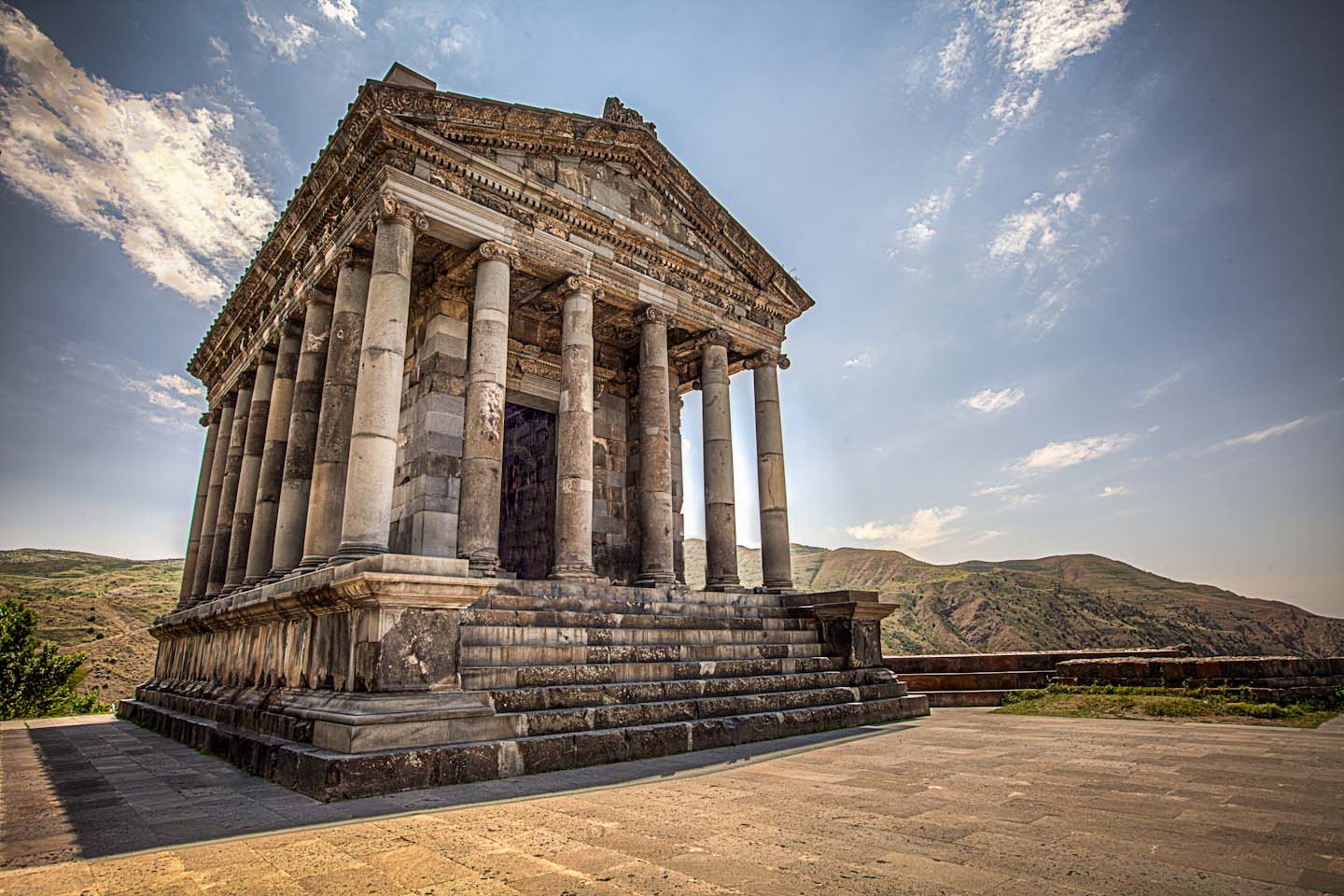In the heart of the National Park of Cilento and Vallo di Diano there is a mountain called "Costa Palomba", which is part of the Alburni chain, located about 4 km from the village of S.Angelo a Fasanella. Who ventures on the top of this mountain, particularly rocky, will find an incredible surprise: carved on a rock there is a wonderful rock sculpture, dating back to the fourth century BC, perfectly carved and preserved in its outline, represented together with a shield and a weapon (an axe, probably), which keeps tied to the belt.
The priceless sculpture is called Antece, a Cilento term which simply means "Ancient".
Mount Costa Palomba was the site of an ancient castrum of the Lucanians. The Lucanians were an Italic people, spread in the inland of Campania before the Romans; a people full of traditions, who clashed between the IV and the I century before Christ first with the Greeks, then with the Romans who had invaded Campania. The castrum was a superb fortress located on top of Costa Palomba, a fortress of which you can see the remains of the walls. An exceptional place, because from here the soldiers enjoyed a breathtaking view that spanned throughout the Valley of Calore, along the Fasanella and even towards the sea: when there is no mist, it is even possible from this point to admire the island of Capri in the distance. It was, therefore, a place in some measure "sacred" from the naturalistic point of view, for the wonder of its position. As is well known, ancient peoples, the Greeks in primis, used to place their places of worship in particularly scenic areas.
And Antece is no exception: the sculpture was in fact a sort of pagan religious icon of the Lucanians, therefore a votive symbol for the pilgrims of the time.
Anthex, in fact, was the pagan divinity of the Alburni; all the Lucanians were obliged to go up the mountain to worship him; the locals and also those who were simply passing through the area, attracted by the fame of the divinity and of the statue, used to ask prophecies to the statue and to perform propitiatory rites, with the help of priests. Often they made animal sacrifices, to ingratiate themselves with the deity.
Anthex was located at the center of a system of fortifications; for this reason, he was a sort of warrior divinity, as we can see from the description of the sculpture: a warrior dressed with the chiton, which was the typical tunic of antiquity (widespread among the Greeks), equipped with axe and shield. A warrior to protect the Lucanian community, to whom, as we have seen, not only the soldiers but also women and children relied to obtain graces.
A place, Sant’Angelo a Fasanella, full of history: not far from Costa Palomba there is the Cave of St. Michael the Archangel, but the origins are much older, on the mountain itself there are even traces of stone objects that apparently were used, even by a community of Neanderthal men, about 40 thousand years ago!
Unfortunately, this place so well known and adored in antiquity today is really little considered. Many people ignore the presence of this magnificent rock sculpture and its exceptional role in antiquity.
(taken from CitizenSalerno)
